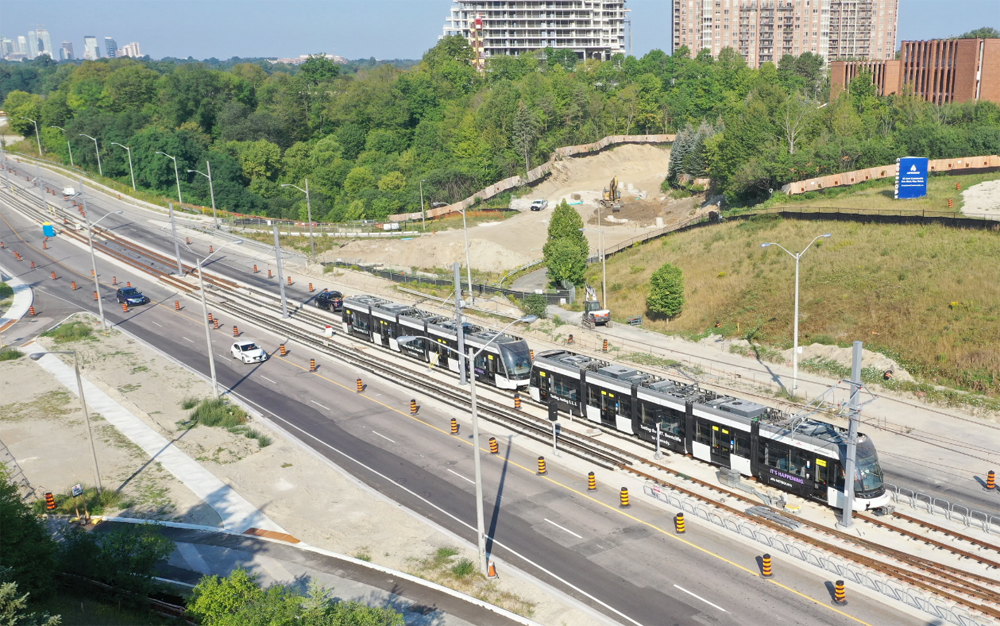
TORONTO — The next generation of transit in Canada’s largest city is expected to debut in 2022 when the Eglinton Crosstown light rail line begins service.
The 19-kilometer (11.8-mile) east-west line will traverse the mid-section of Toronto along Eglinton Avenue, through densely packed residential and commercial neighborhoods both at grade and with 10 kilometers (6.2 miles) running underground.
Though owned by Metrolinx, a Toronto-area transportation agency overseen by the Ontario government, the line will be operated by the Toronto Transit Commission as Line 5, or its fifth subway line. It will connect with the TTC’s original U-shaped north-south Line 1 at two points in central Toronto, and with Lines 2 and 3 at the eastern terminus, Kennedy Road. The line will also connect with 54 bus routes across numerous stations and with three GO Transit commuter rail stations. Access will be both from underground stations and at at-grade stops.
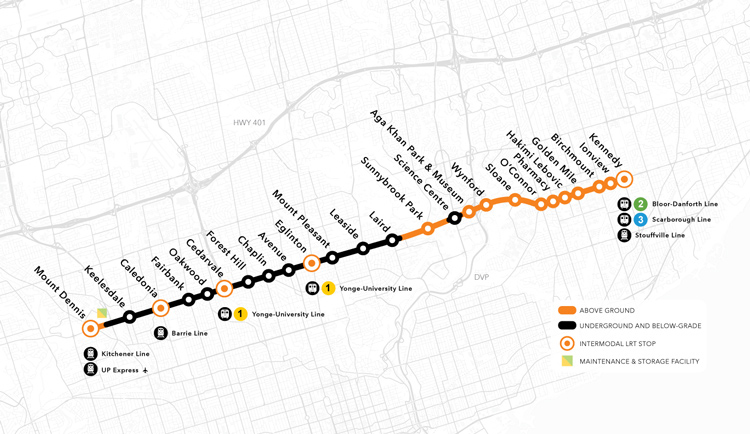
The C$5.4 billion project is the first to be built as part of Toronto’s massive Transit City transit plan, which in 2007 proposed construction of several light rail lines and other transit projects. Construction began in 2011.
Officials could not be more definite than indicating the line will open “sometime” next year. Completion has been delayed several times due in part to unforeseen construction issues and lately to COVID-related slowdowns. Merchants along the line’s core section in midtown Toronto have complained about lost business due to construction, for which they were awarded compensation.
Altogether, Line 5 will have 25 stations and is expected to improve travel times by 60% compared to the street’s existing bus service. It will provide “fast, reliable and convenient transit,” Metrolinx’s Paul Manhire, executive vice president of rapid transit, tells Trains News Wire. “A midtown connection between east and west Toronto will make our trips easier.”
The line’s mainly eastern section will see trains move on a dedicated at grade right-of-way in the center of busy Eglinton Avenue, separated from vehicular traffic and with some traffic-signal priority. The underground section will run from Keelesdale (Keele Street) on the west to Laird Drive on the east.
Trainsets are Alstom’s (formerly Bombardier’s) Flexity Freedom, a cousin to the TTC’s Flexity Outlook streetcars. But the Freedoms will run on standard, instead of the wider (4-foot, 10 7/8-inch, or 1,495-millimeter) gauge of the existing streetcar system. This will allow standardization with purchases for other light rail systems across the province of Ontario Alstom will also maintain the rolling stock for 30 years.
The system will use a combination of automatic train control (ATC) and human operators — ATC within tunneled sections with operators opening and closing doors and initiation station departures, and full operator control with ATC guidance for the eastern at-grade section.
Projected ridership by 2031 is 5,500 per hour per direction at peak times. Cars on the articulated train sets can be added or removed to accommodate ridership.
Manhire says Line 5’s design has been guided by a “passenger first” focus and by “elevating the passenger experience.”
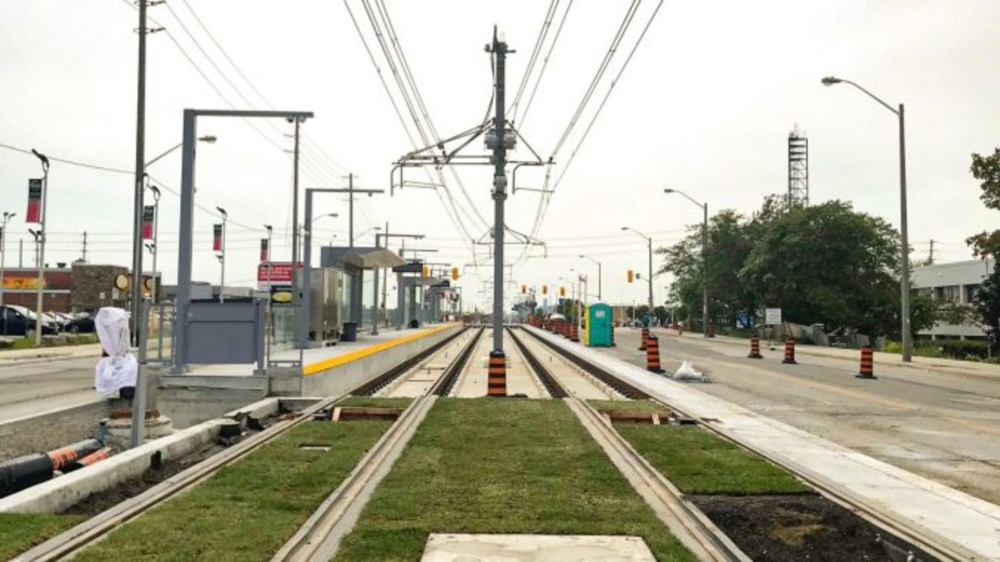
This includes “seamless wayfinding” — the use of signage, symbols and colors to guide passengers at stations and connecting transit points, as explained in this document. Stations will also feature consistent use of natural light for optimal visibility and safety. The project will also provide a total of 916 bike parking spaces.
Some parts of the at-grade line will also feature “green tracks,” composed of grass and other foliage, including irrigation chambers and water supply. The purpose is to reduce temperatures in summer, dampen sound, absorb rain, and minimize dust.
The trainsets’ black-and-white livery will roughly compliment the TTC’s existing subway cars.
Manhire says construction challenges have included the intricacies of building within a dense city and navigating around existing infrastructure. For example, at Eglinton and Yonge Street, the station had to be built below an existing TTC subway station.
“This is a massive engineering undertaking,” he says. “Moreover, the station and surrounding infrastructure is over 50 years old. While working with the TTC, engineers discovered that the existing underpinning needed to be replaced before the new LRT station work could continue.”
The consortium building the system is Crosslinx Transit Solutions composed of more than two dozen infrastructure companies including SNC-Lavalin, Aecon, and Dragados.
— Updated at 8 p.m. CDT on Oct. 5 to correct information on bicycle parking at stations.






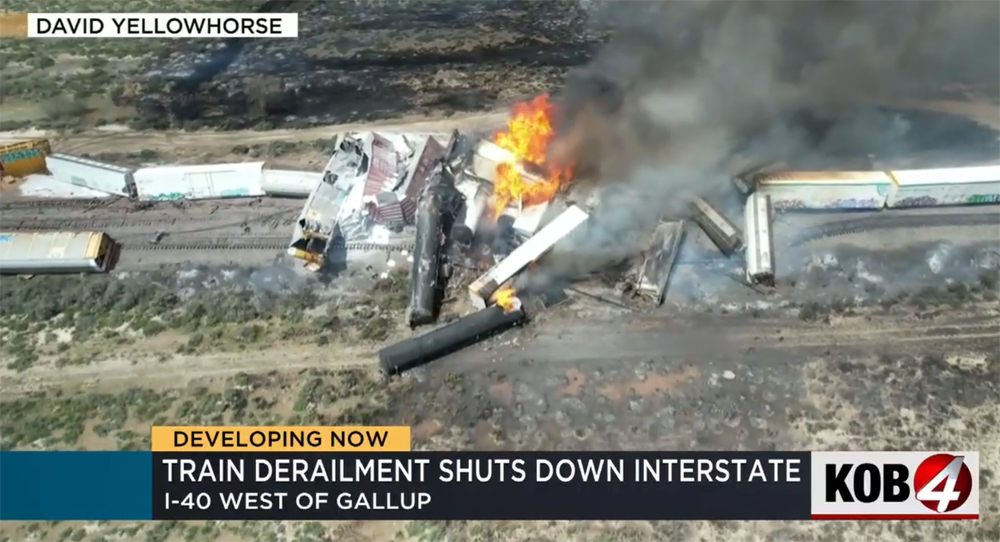
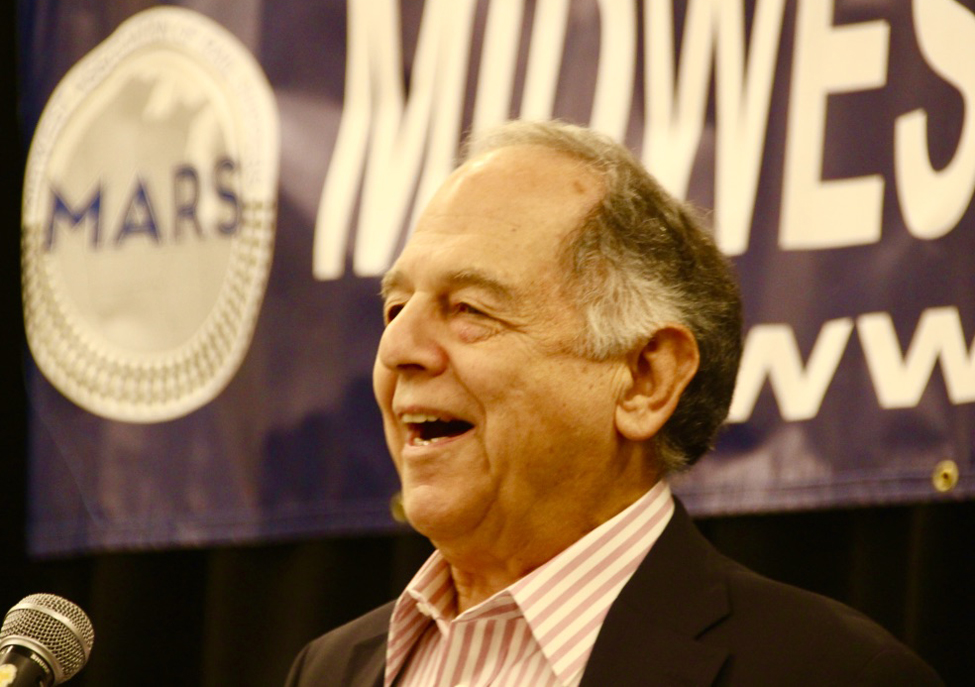
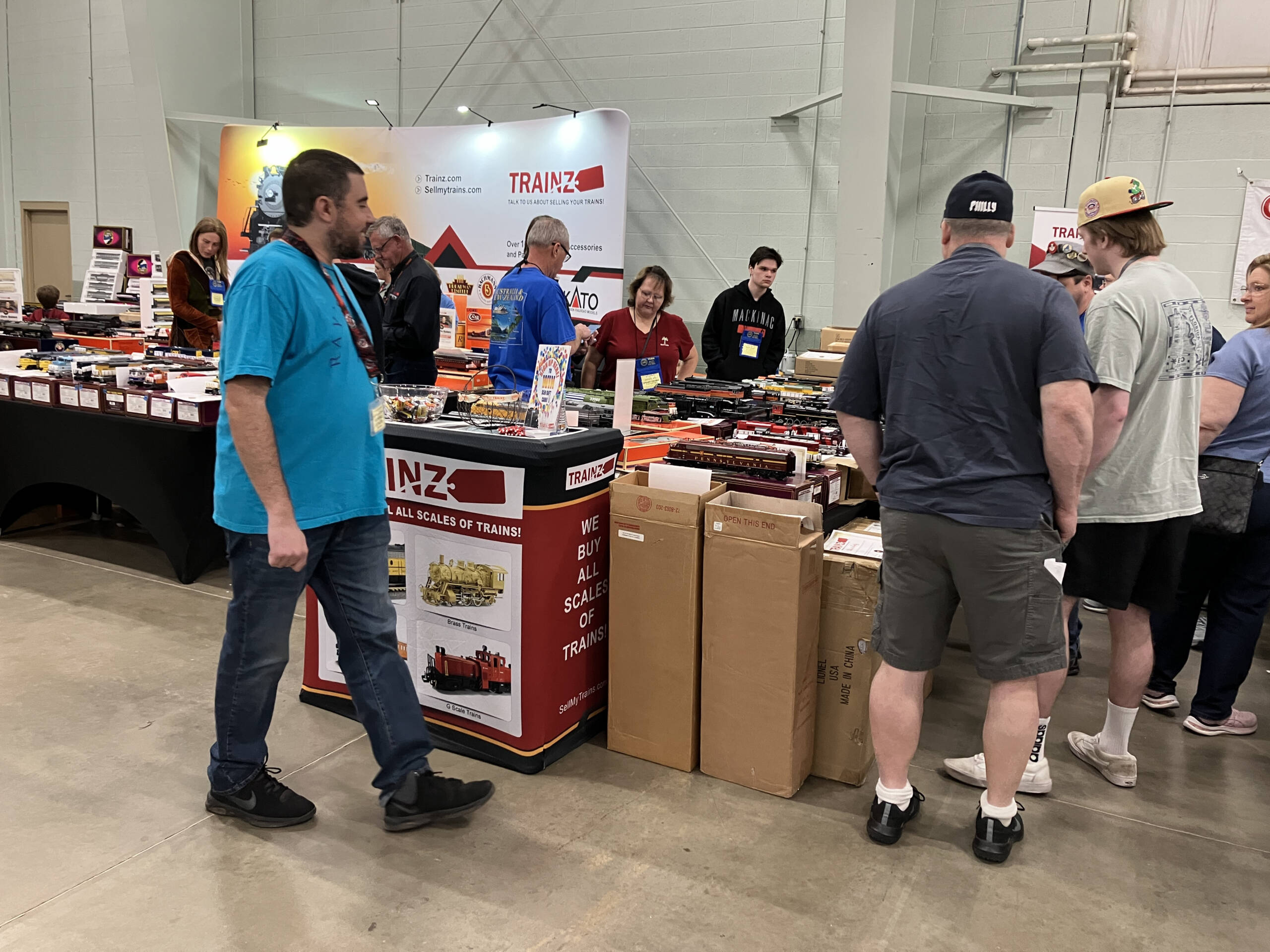
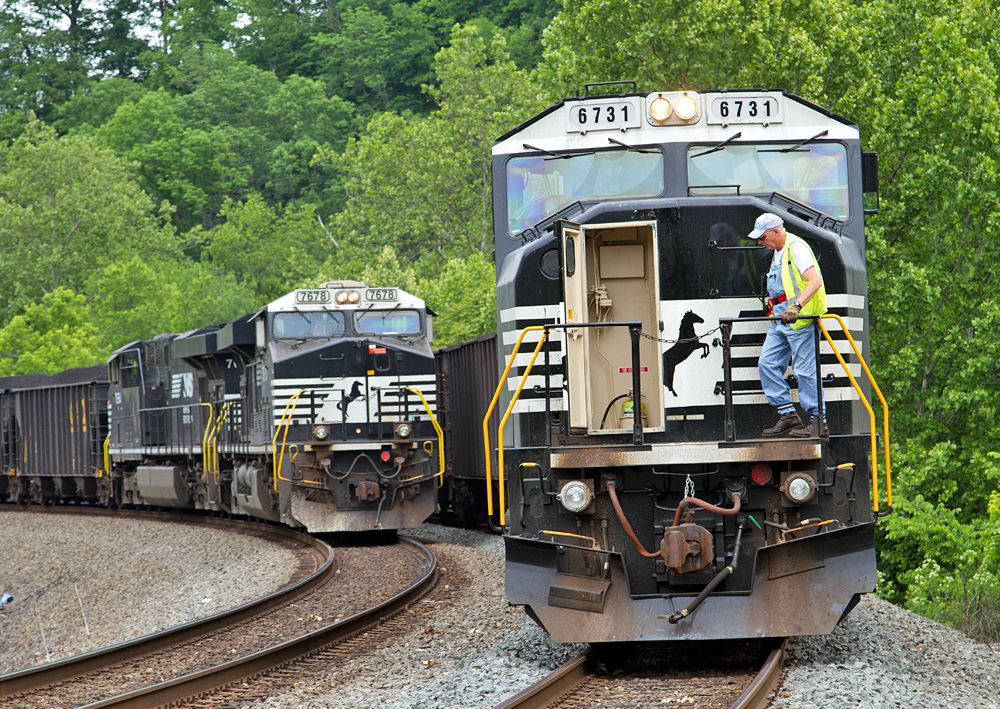




Well that’s reassuring; a month ago it was “September 2022”. Now they don’t know.
It’s going to be a busy year regardless; some of the stations look like they haven’t progressed in months.
SNC is involved David, so………….
Any comments folks on planting grass over concrete ties?
Charles, not knowing for sure but I will hazard a guess the poured concrete slab with the stools for the rail is extended through the area where the grass is planted otherwise it would never survive due to lack of soil.
Bigger question would be ongoing maintenance of the grass, cutting,
PRT’s (now SEPTA) Chester Short Line was “green” with grass growing amid wood ties and T-rail. Line ran through a swamp on a fill. Line used 4000-series “Hog Island” cars. Now swamp is a wildlife preserve, line outside City is Rte 37-bus and inside City is Rte 36 Subway-Surface trolley line.